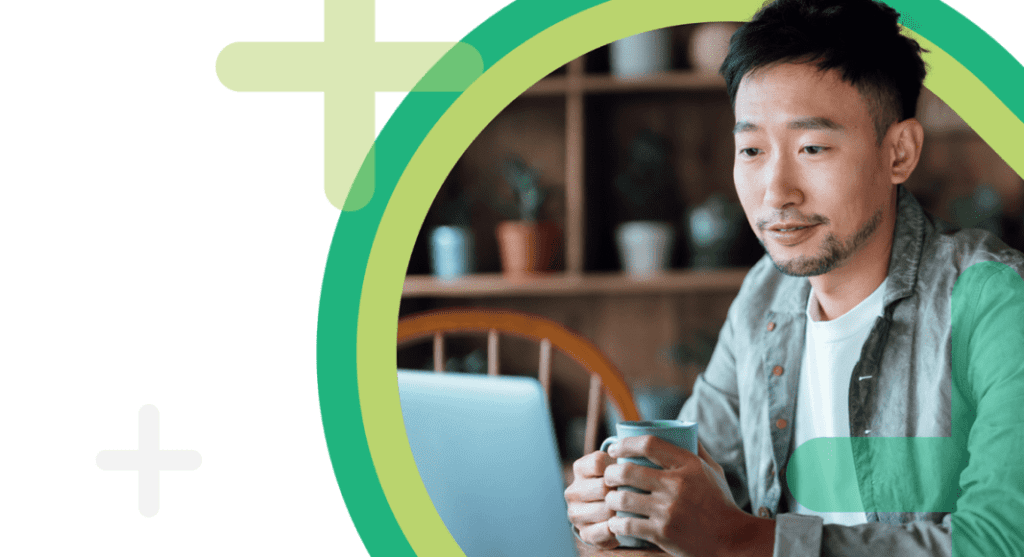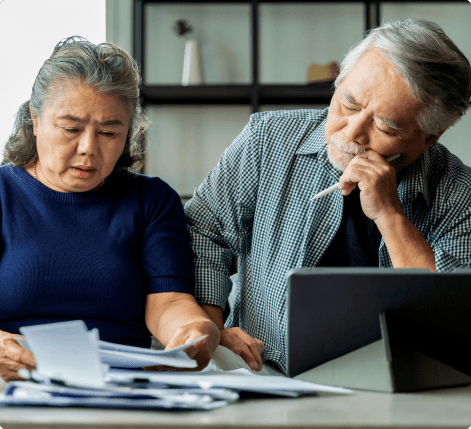
Bankruptcy
Bankruptcy is not the only debt relief solution, but it can be the right choice for you to eliminate your unmanageable debt.
Debt relief
Find financial freedom with bankruptcy
Personal bankruptcy is an effective, legal debt relief solution under Canada’s Bankruptcy and Insolvency Act that gives Canadians the fresh start they need. Bankruptcy provides relief from nearly all debts, including credit cards, personal loans, payday loans, lines of credit, income tax and other CRA debt, and more. While bankruptcy will give you and your family immediate financial protection, it should be considered a last resort and after other debt relief options have been reviewed, such as a consumer proposal. Our Licensed Insolvency Trustees will review your unique financial situation and help you decide if bankruptcy is your best step toward financial recovery and debt freedom.
- Eliminate your unmanageable debts in as little as nine months
- Creditors can’t refuse your bankruptcy
- No maximum debt threshold
- Peace of mind and a fresh financial future

Why Bromwich+Smith
Understanding the bankruptcy process:
a step-by-step guide
Only a Licensed Insolvency Trustee is licensed to administer a personal bankruptcy on your behalf. We’ll help you determine if bankruptcy is the right solution for you and will guide you throughout the process. Once all steps are completed, you’ll receive your discharge from bankruptcy.
Step 1
Take the first step and speak to one of our experts. It’s free, confidential, and without judgment. We will review your personal and financial situation and ask you questions about your debts, income, and assets. Your payments will be based on your income and household situation, and the type and resale value of your assets.
Step 2
If bankruptcy is determined to be the right solution for you, we will prepare all documents for you to sign. Your trustee will file your documents with the Office of the Superintendent of Bankruptcy. All creditors must stop contacting you or taking any further collection action.
Step 3
Your trustee will notify your creditors that you have filed for bankruptcy and provide them with your documentation. If you have assets or significant household income, we’ll work with you to set up payment arrangements you can afford or discuss alternatives.
Step 4
You start fulfilling the terms of your bankruptcy by fulfilling your payment agreement, submitting monthly income and expense statements, and attending two financial counselling sessions that will help you stay debt-free. In most cases, once you’ve fulfilled your duties and your payments are complete, you’ll receive your discharge from bankruptcy. You can now start restoring your credit and living debt free.
Solutions
Eligibility criteria for a personal bankruptcy
To be eligible for personal bankruptcy, you must satisfy several requirements, including working with a Licensed Insolvency Trustee, who are the only professionals licensed to file a bankruptcy in Canada. If bankruptcy isn’t for you, you may want to consider a consumer proposal, which can also get your finances back on track.
- Your debt is unmanageable, and you are unable to make your payments when they become due
- You are not currently bankrupt
- You owe at least $1000 in unsecured debt
- You are a Canadian resident, or do business in Canada, or own property in Canada

Key benefits of a bankruptcy
- Fast timeline to get out of debt
- Often costs less than other debt relief options
- Most debts can be eliminated
Questions answered
FAQ’s
We have put together a list of common questions and answers about personal bankruptcy. A Licensed Insolvency Trustee can also walk you through all your options and answer any questions you have.
What are the disadvantages of filing for bankruptcy?
There are several considerations to review before you file for bankruptcy:
- You potentially lose all non-exempt assets and may be sold to satisfy creditor debts
- You must submit monthly income and expense statements to your trustee
- Your monthly payments are based on your income, which can fluctuate if there are changes in your monthly income
- Some of your tax refunds and other tax credits are returned to your trustee for administration
- Your credit cards are cancelled, and your credit rating is negatively impacted
What debts cannot be eliminated by bankruptcy?
- Fines and penalties imposed by a court
- Child support and maintenance
- Spousal alimony
- Any award by court for damages for intentionally inflicting bodily harm, wrongful death or sexual assault
- Debts or money owing due to fraud, embezzlement, misappropriation or misconduct
- Money owing for things stolen
- Student loans (if it has not been seven years since your last date of study)
- Secured loans (mortgages, car loans) or secured liens on property
- In some unique situations, gambling debts
What is surplus income?
Surplus income is a calculation established by the federal government based on household income and the number of people within that household. Each year, the government issues surplus income thresholds for which an individual person can have a reasonable standard of living. These threshold limits determine how much you would need to pay in surplus income when filing bankruptcy. Your Licensed Insolvency Trustee will determine if you need to make surplus income payments monthly, how much and for how long.
What assets do I get to keep after filing for bankruptcy?
Losing all your assets is one of the most common myths about bankruptcy. You will not lose everything when you file for bankruptcy, however, there are several factors to consider, and each province and territory outlines a list of exemptions (what assets you get to keep). For example: many provinces and territories allow you to keep clothing, household furnishings, tools & equipment used to earn a living, registered investments such as RRSP/RRIF/RDSP, most pension plans, some equity in your home, and a vehicle (limited value). Since the exempt assets and conditions vary by province and territory, please speak to your Licensed Insolvency Trustee to determine what specifically applies to your financial situation.
How does filing for bankruptcy impact my credit rating?
A Bankruptcy stays on your credit report for six years after the discharge date, or seven years after the date filed without a discharge date. If you file a second bankruptcy, then both bankruptcies stay on your credit report for 14 years after the discharge dates. You are assigned a rating of R9.
Still have a question?
If you are struggling with debt and want to know if bankruptcy is the best debt relief solution for you, give us a call. We offer free, confidential, non-judgmental consultations to better understand your unique situation and we will find an option to help you become debt free.
We’re here to help
Get in touch
Managing debt can be difficult, but we’re here to help. Our Insolvency Advisors can show you your options and help you choose the best plan for you.
![]() See if you qualify
See if you qualify
Leave us your information and one of our advisors will reach out to you.
![]() Start a live chat
Start a live chat
Chat live with an insolvency advisor during the following hours: Mon–Thurs: 6:30am–8:00pm, Fri: 6:30am–5:00pm, Sat: 8:00am–5:00pm, MDT.
